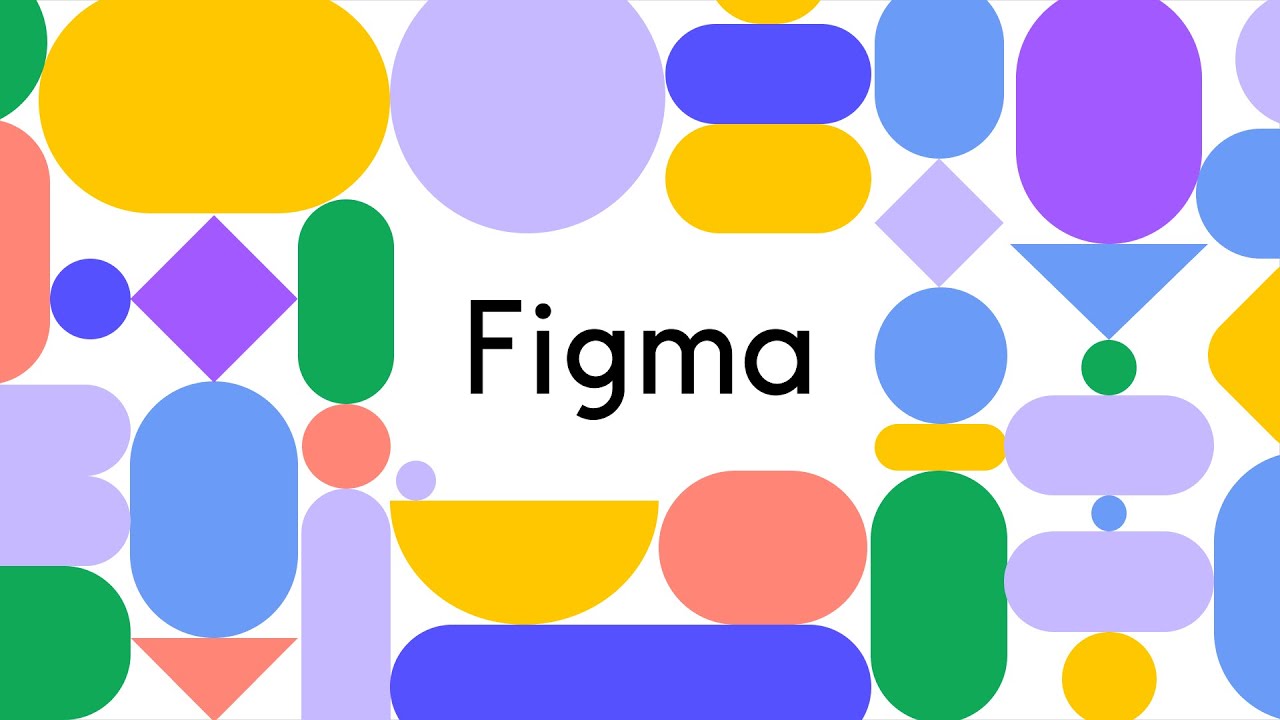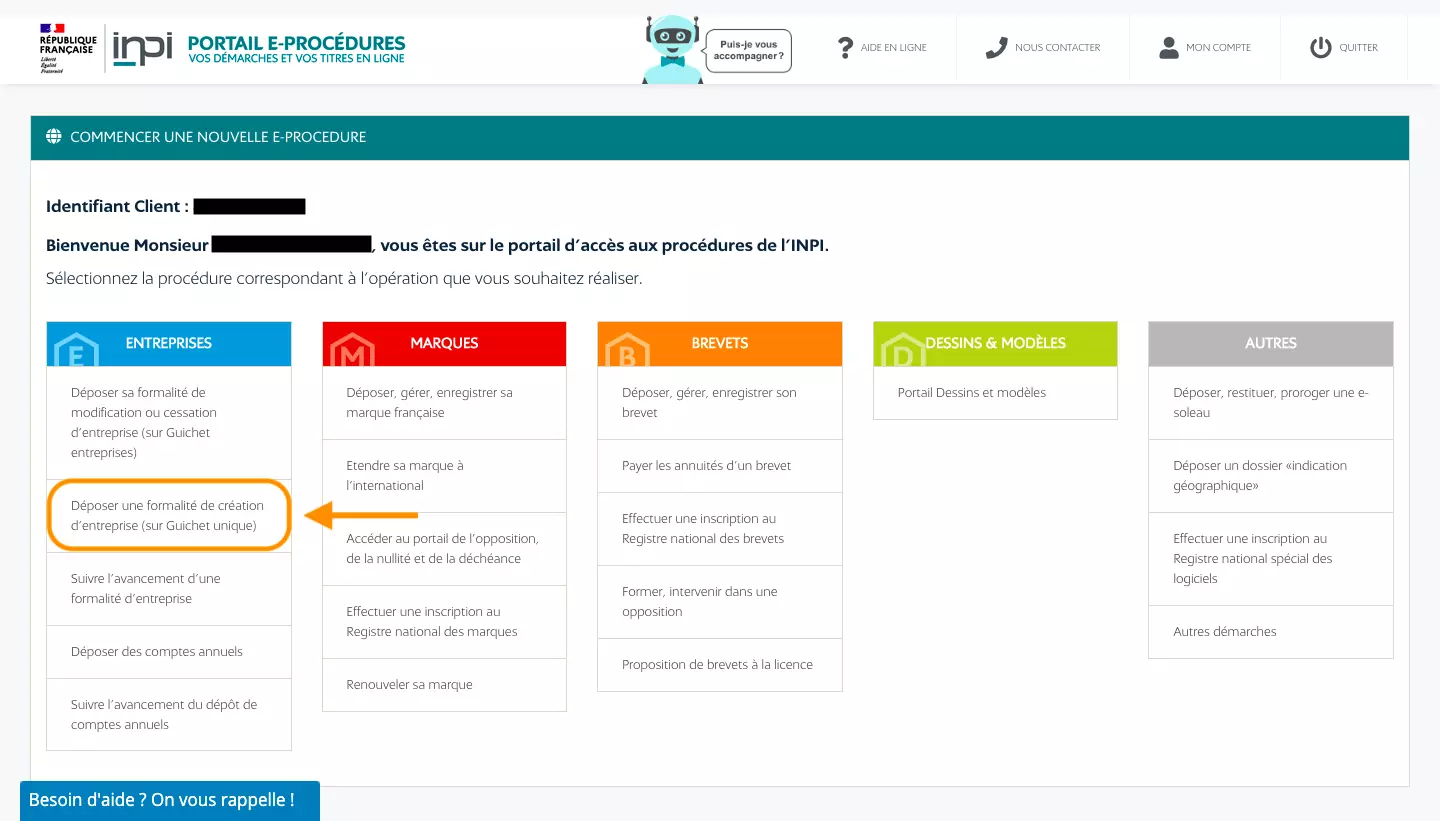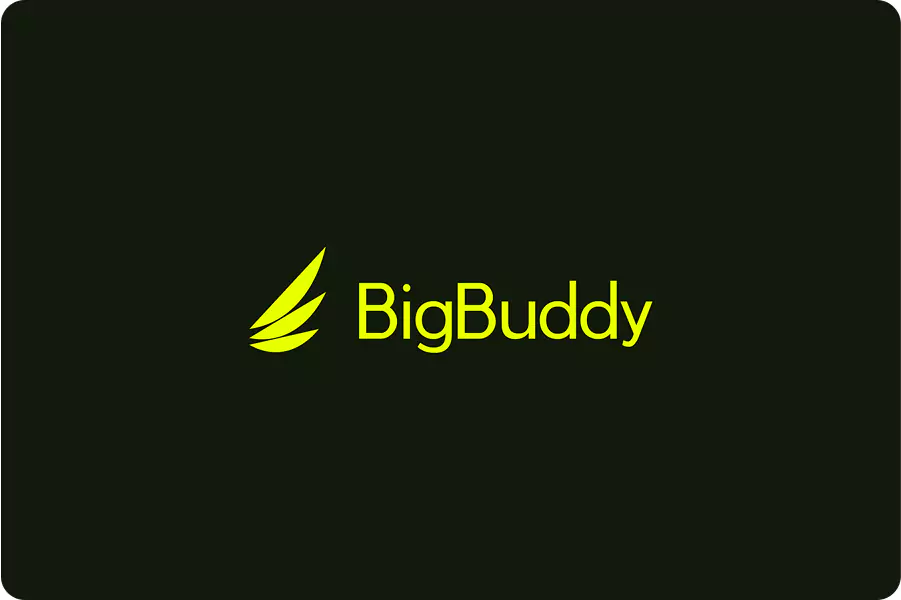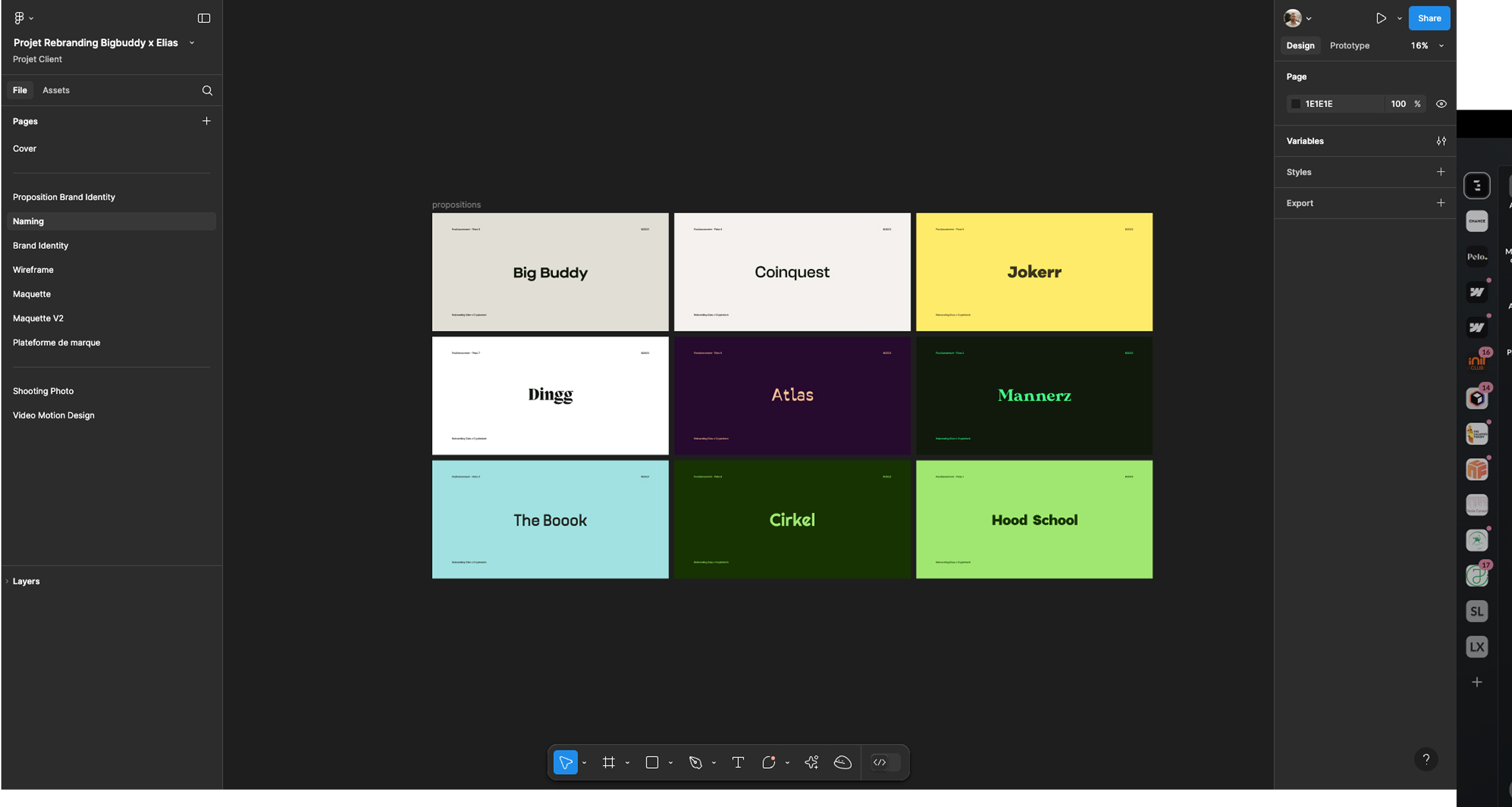Finding a brand name is exciting... until everything you imagine seems to have either already been registered or completely unsuccessful. You go from “awesome” to “ridiculous” in three syllables, and each word seems either too banal or too original to the point of losing all meaning. Result: you go around in circles in your Google Doc, halfway between brainstorming and existential crisis.
And yet, it is often this first word that will lay the foundations of your entire identity: it will be displayed on your site, your logo, your social networks, and especially in the heads of your customers. It will be your signature.
In 2025, creating an effective name is no longer just a creative pirouette. It is a major strategic issue, an essential point of contact between you and your audience. A good name can get a brand off the ground. A bad one... can make it invisible.
In this article, we share our method for finding a name that's striking, memorable and aligned with your identity. To get your brand off to a good start... with the right word.

A good brand name is not necessarily one that “sounds good.” It's the one that just resonates. One that reflects your identity, that aligns with your mission, and that effortlessly sets you apart in a saturated market.
Today, the name of a business is not just an idea thrown on a list:
At Studio Elias, we see the name as a key entry into the world of the brand. It does not have to say everything, but it must arouse curiosity, make people smile, and be intrigued. In short: he must score, and do it at the right time, with accuracy. Because in 2025, you no longer have time for a name that falls flat.
Before embarking on a marathon of post-it notes, name generators, or fiery brainstorms, it's essential to lay the right foundations. Because a brand name is not just a fun find. It is a strategic tool, at the service of your image, your communication, and your growth.
Here are the 6 essential criteria to keep in mind when choosing a brand name that lives up to your ambition.
A good name is a name that stays. It prints easily, circulates naturally, settles in the head effortlessly. It must be able to be transmitted orally without confusion and withstand the test of time (and hallway conversations).
If your audience has to write it down to remember it, or Google it three times before landing on your site, you've lost the edge.
Avoid: indigestible acronyms (such as “XGLD Corp”) or ultra-abstract names that leave no imprint. To aim for: a name that is fluid, catchy, sonorous. A name that stays after scrolling.

Is your brand name different? Really? In a world where all brands want to “innovate”, “connect”, “perform”, many end up with interchangeable names like “Nova Group”, “Tech Solutions”, “Bluewave Systems”...
The problem? These names don't mean anything. They are smooth, tasteless, and completely embedded in the mass.
A distinctive name creates a unique imprint in the public mind. He dares an unexpected word, a strong image, an imaginative bias. It reflects your uniqueness instead of copying that of others.
Our advice : take a tour of the universe of your competitors before validating a name. If it could be theirs, it's not the right one.
A good brand name alone is not enough, but it should speak the same language as your brand. It must be consistent with your identity, your values, your catalog, your target.
Let's take a simple example: a natural cosmetics brand called “Steel Empire” would create immediate dissonance. The same goes for a meditation application called “TurboLaunch” or “ImpactCore”. The name, even if graphically successful, would be totally out of step with the promised experience.
A well-chosen name reinforces the message. It creates a continuity between the content and the form. It is a lever for clarity and coherence.
The temptation is great to create a brand name that “sounds international”, to add an “x” or a “y” to make tech, or to remove vowels to make a startup. But be careful: legibility, pronunciability and spelling must remain natural.
If your audience can't pronounce it, they won't talk about it. If he can't type it into Google, he won't find you. And if you have to correct every time someone writes to you or mentions you, it will become a barrier to your reputation.

A good test: dictate the name to someone on the phone. If he gets it right the first time, you're on the right track.
This is perhaps the most pragmatic condition, but it is unavoidable. A good name is also a name that can be used legally.
That means:
Too many entrepreneurs come up with a great name... and then discover that it's already registered or squatted. This can lead to legal fees, an emergency name change, or worse: a legal conflict.
Our advice : do this check very early, as soon as you have a serious shortlist.
Your brand name should not only be adapted to your current offering. It must also be able to support you over the long term. This means that you should not choose a name that is too restrictive, too geographical, or too linked to a single item.
Typical cases to avoid:
An evolving name is a name that is broad and flexible enough to accommodate your future developments: new ranges, new targets, new territories. He does not freeze in the present, he anticipates what is to come.
And to find out if it will hold up? It must be tested: in a sentence, on packaging, in a Google search, in front of a customer. A good brand name can be adapted to all uses, to all situations.
These 6 criteria are your solid base in the naming jungle. And believe us, when a name ticks all the boxes, it shows: it's clear, obvious, engaging. It becomes the basis of your brand strategy, much more than just a label.
Before you start looking, you need to know what you want to say. What are your values? Your vision? Your competitors? Your target? At Studio Elias, we always start by defining the positioning, the brand's DNA and the areas to be explored.
We activate the creative mode: lists of keywords, associations of ideas, associations of ideas, sound games, Greek or Latin roots, cultural references... We broaden the lexical field as much as possible to open up the possibilities.
We go from a long list to a short list. We eliminate names that are too close to existing ones, doubtful puns, or ideas that are too vague. We keep what is strong, consistent, and relevant.
Each name is checked:

We test the names in sentences, in a logo, orally, with the target. The idea is to see how he lives. How it sounds. How it is perceived. Because a good name lives well in any context.
Let's take a very telling case: BigBuddy. It is an educational brand that we supported at Studio Elias. The challenge: to leave a universe of cold and top-down training, and build a human, complicit, and positive brand.
The name should reflect the idea of caring, modern and dynamic support. And that's exactly what BigBuddy says: a great friend, a mentor, a reassuring presence that helps you progress, without ever judging.
Because Bigbuddy is not training, it's education.
The result? A name that is memorable, emotional, easy to pronounce, adaptable... and above all, bearer of a real personality. It doesn't explain everything. He suggests. It attracts. It seduces.
👉 See the complete project on our portfolio

Finding a good name isn't just about applying a good method. It's also about avoiding the classic mistakes that hamper the best ideas. Because even with a good creative instinct, certain reflexes can sabotage an entire branding effort.
Here are the most frequent pitfalls, the ones we still encounter all too often (and that we help you avoid at Studio Elias).
Originality is good. The incomprehensible, much less so.
In the desire to stand out from the crowd, you may be tempted to be too creative, to the point of proposing a name that is so obscure, complex or quirky... that it no longer means anything. Result: the brand becomes unclear, difficult to explain, impossible to remember. And above all, it escapes any reference point.
example : a name invented from scratch, with a convoluted spelling, unpronounceable orally, untranslatable in writing, and without keywords to connect the mind to anything tangible. You may be creating a “wow” effect in a meeting room... but no one understands why.

Our advice : be inventive, yes, but not at the expense of common sense. A good name is often simple but full of meaning. It awakens an image, a sensation, a universe. It creates a link between your idea and the heads of your future customers. And that connection should be clear, not cryptic.
It's the classic reflex: ask the team, associates, partners, customers, friends, family... even the dog for their opinion. Result : everyone comments, the proposals oppose each other, the compromises accumulate... and the final name is lukewarm, consensual, without personality.
When it comes time to choose a business name, the catch is trying to appeal to everyone. A good name is not unanimous: it draws a clear line, it speaks to your target audience, it reflects your vision, it affirms a posture.
If you want to create your brand with character, you have to accept that a good name can be divisive... as long as it connects with the right people.
Our advice : involve the right profiles (founders, branding experts, a few representative customers), but above all: stay the course. Naming is a strategic decision, not a participatory democracy.
A name may sound great on paper... and completely flawed in real life. A good name should work:
example : a name that is too long that never fits into a grid, a name that is too abstract that loses all impact in advertising, or a name that is visually difficult to read once stylized.

Our advice : simulate concrete uses before validating. Say it, write it, put it into a situation.
It cannot be repeated enough: a good name is an available name.
Too many projects move forward headlong, invest in logos, sites, communication... only to end up discovering that the name has already been registered with the INPI, or that the domain is squatted. And now it's a disaster: obligation to change, deadlines, additional costs, even disputes.
Our advice (again and again) : always check your shortlist on:
A name that is too descriptive, too focused on the initial offer, can quickly become an obstacle to growth. He freezes the brand in an immediate association of ideas, without giving it the freedom to evolve.
example : “Express Meal Delivery Paris”. Perfect for launching an MVP, but much too restrictive if, two years later, you offer organic baskets in Lyon... or wellness items nationally.
A good name must be able to follow the evolution of your offer, your target audience, or your territory. It should be flexible enough to grow with you without having to start all over again at each pivot.
Our advice : during the brainstorming phase, avoid getting stuck in a functional or purely descriptive term. Instead, look for a storytelling tool: a name that evokes a universe, an energy, a promise — not just a service.
Think of the name as a brand foundation, not as a catalog line.
And if you've already made a mistake like this, don't worry.
Spoiler : you are not alone. And the good news is that with the right support, it can be corrected very well.
When you think of a good name, you often think of the brand as a whole. But as soon as a business grows, a question always comes up: Should we give each product or service a different name? Or group everything under one name?
The answer depends on your strategy, your business model, and your long-term vision. Here are a few guidelines to help you get a better idea.
It is the simplest case. You have a business, a product, a name. Everything is concentrated under a single identity. Perfect if:
example : Airbnb, Uber, Doctolib... The name of the brand is also that of the service.
Advantages:
Disadvantage:
This is the model adopted by companies that develop several ranges, several services, or that wish to design specific worlds around each product.
example :

Why do that?
Benefits :
Disadvantages :
We always start with brand strategy. No rigid rules, but one question: What is the ambition behind the project?
Take the case of BigBuddy, a brand established with our studio. The objective was clear: to build a strong identity around a central name, which embodies both mission, personality, and user experience. BigBuddy did not need to use several names for its services: the strength of the concept lay precisely in the coherence and simplicity of the brand ecosystem.
On the other hand, for a company that launches a platform, an application, then a range of physical products or an online school... it may be wise to create complementary, linked but autonomous names, to avoid everything based on a single word.

Choosing a business name is not a formality. It is a fundamental choice, which influences your image, your positioning, your development, your link with your audience.
In 2025, it's no longer enough to have a name that “sounds good.” You need a name that resonates just right, that stands out without getting lost, that says something before we even read the first line of your pitch.
A good name is a rare mix: a dose of strategy, a touch of controlled creativity, a real reflection on what you want to transmit today and tomorrow.
And a good brand always comes with a good slogan, so if you want more content, we invite you to discover our Top 50 Best Brand Slogans !



